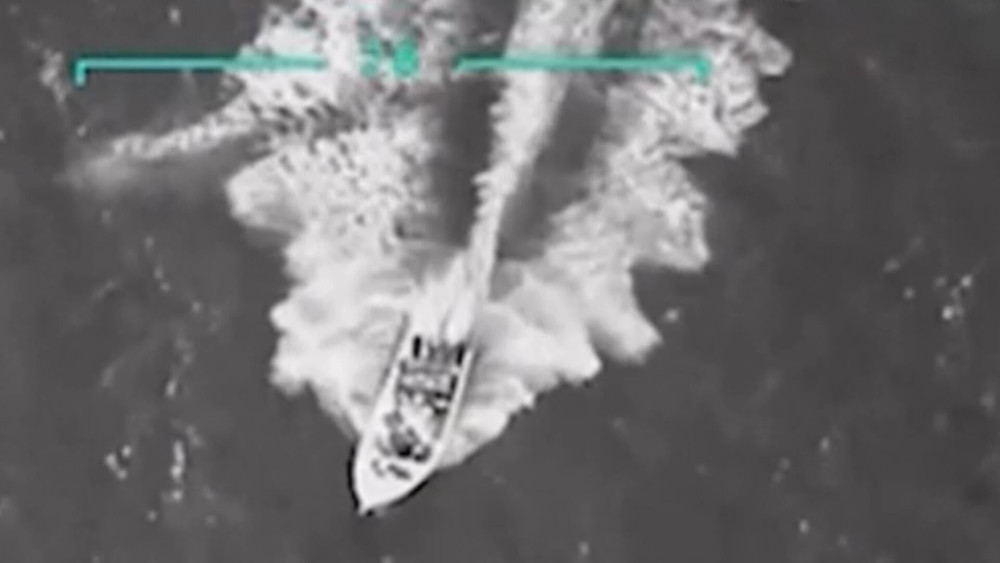
The grainy black-and-white videos are basically the same. They show a stripped-down, outboard powered speedboat or a specially designed half-submersible vessel, its decks awash, underway. Suspected drug-runners, the boats are cutting through the waters of the Caribbean or the eastern Pacific. In the blink of an eye, we watch as they are targeted by dooming crosshairs that soon erupt in a blinding explosion. The boat disappears, and the missile impact area is strewn with debris, scattered dope and body parts.
It has happened at least 14 times in the last two months. At least 50 purported dope smugglers have been killed, blown up by the United States military, most often in the eastern Pacific, in international waters around Venezuela, Colombia and Mexico.
After initially asking us to take their word that the deadly missions are righteous, Secretary of War Pete Hegseth now generally describes without detailing, the nefarious intent of the would-be smugglers. Tuesday’s announcement of the four latest strikes was typical. “The four vessels were known by our intelligence apparatus, transiting along known narco-trafficking routes and carrying narcotics.”
Overseas, President Trump may be the peacemaker using moral suasion and the blunt force of tariffs to make peace from Azerbaijan and Armenia to Pakistan and India, to Hamas and Israel. But for all his questing for recognition as a peacemaker abroad, on the high seas, closer to home, Trump is out for blood. Now, with an aircraft carrier and a muscular fleet at his disposal, Trump promises to rid the waters south of the United States of drug runners.
Many are queasy about us simply blowing up drug smugglers with neither warning nor trial. Me, not so much. If our intelligence agencies are pretty sure of their identity, cargo and destination these smugglers must know they are taking a life and death risk. You have seen the videos. These are not fisherman. Throughout history pirates caught red-handed have paid the ultimate price. Isn’t a missile strike the modern, moral equivalent of a buccaneer being flogged, branded, and hung from the yard arm?
Critics of President Trump’s high-tech attacks say no use of deadly force is permitted, unless a war is declared or the action is sanctioned by Congress, treaties or the UN Convention on the Law of the Sea. Several Republican senators led by Rand Paul have condemned the lethal strikes. Law makers have characterized the killings as extra judicial, outside the law, illegal. They believe strongly that even drug traffickers caught red-handed in international waters should be given their day in court.
Not so easy. It is a big ocean and these are bad dudes in small, fast boats. And this isn’t the first time we have used lethal military force to kill them.
From 1999 through about 2015, the United States spent $10 billion to save the South American nation of Columbia from a Marxist insurgency that was being funded by drug smuggling. In 2008, a guerrilla leader I had interviewed for Fox News a couple of years before named Raúl Reyes, the head of the principal rebel group FARC was killed by a missile strike certainly targeted and fired by the United States.
Colombia is still a mess, unable to prevent itself being used as a drug depot. Rather than accept responsibility, Columbia’s president Gustavo Petro labels the boat strikes “murder.” In response, President Trump is cutting all aid, but policing South American drug runners is even more difficult with the emergence of Venezuela as a strategic enemy of the United States. There is no doubt Venezuelan dictator Nicolás Maduro would love to destabilize and distract us with a flood of both migrants and illicit drugs.
80,000 Americans died last year from overdoses. Fighting the scourge, President Trump has militarized the war against their suppliers, and he has the fleet to do it. The U.S. has an aircraft carrier and other major vessels on location. Also on board is a sizable invasion force, should it come to that, and it might.
The dope runners know the stakes. They are high seas pirates. Their profession can be enormously lucrative, but it does not promise longevity. When a drug smuggler decides to move a ton of fentanyl laced cocaine from Caracas or Bogotá to South Beach or Southern California, they stand a reasonable chance of ending up like the pirates of yore, swinging from the yard arm.
More articles by Geraldo Rivera.
Watch Geraldo’s latest videos.
